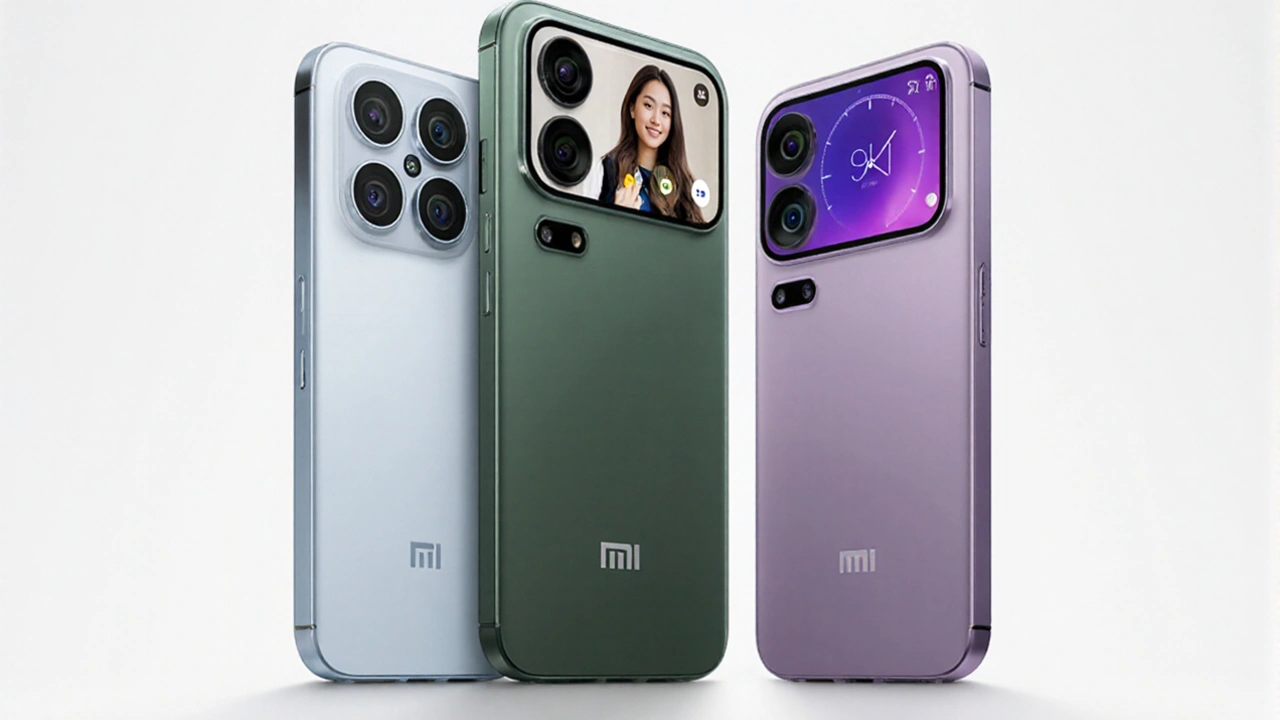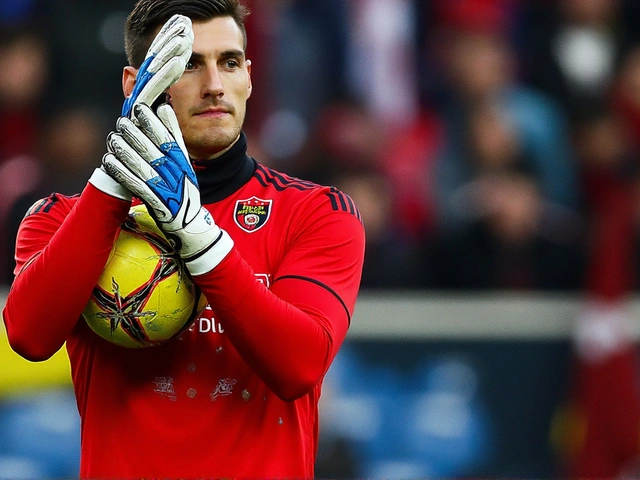Current Xiaomi 15 vs iPhone 16 Showdown
When the Xiaomi 15 entered the market, the company made it clear that the device was built to sit squarely across from Apple’s iPhone 16. Independent labs ran side‑by‑side tests covering everything from camera fidelity to battery endurance. The iPhone 16 still leads in exposure control, flare mitigation and video stabilization – traits that matter a lot to vloggers and filmmakers who rely on consistent, cinematic footage. iOS’s built‑in image processing pipeline and ProRes video support also give it a niche advantage for professionals.
On the other side of the ledger, the Xiaomi 15 pushes a sensor that is marketed as 20 % sharper, translating into noticeably crisper macro shots and fine‑detail landscapes. Battery life is another headline feature: under typical mixed‑usage conditions the phone comfortably reaches two full days, compared with roughly 1.5 days on the iPhone 16. That extra stamina is largely credited to a larger cell and more aggressive power‑saving firmware.
Speed of power replenishment is where Xiaomi draws a bold line in the sand. The phone ships with a 100 W wired fast‑charging system that can top up a 5,000 mAh battery from 0 % to 80 % in under 20 minutes. Apple’s 30 W solution needs double the time for a comparable charge level, meaning Xiaomi owners spend less time tethered to a wall outlet.
Pricing underlines the rivalry. Retailers list the Xiaomi 15 at about 30 % less than the iPhone 16, yet the spec sheet – OLED display, flagship‑tier processor, high‑resolution camera array – mirrors Apple’s offering. This price‑performance gap is especially compelling in markets where consumers weigh cost against raw specs more heavily than brand cachet.

Future Xiaomi 17 Series and the Bigger Tech War
Looking ahead, Xiaomi’s next‑generation flagship line, the 17 series, raises the stakes even further. Early benchmark data shows a single‑core Geekbench score of 3,812 and a multi‑core rating of 11,993, comfortably outpacing the iPhone 17 Pro’s numbers. The flagship Xiaomi 17 Pro Max is powered by the Snapdragon 8 Elite Gen 5 chipset, paired with a custom‑tuned GPU that promises smoother gaming and AI tasks.
The display team is also turning heads. The 17 series adopts a Super Pixel OLED panel with a true 2K resolution and a 120 Hz LTPO refresh rate that can dynamically drop to 48 Hz to save power. Apple’s own ProMotion displays are comparable, but Xiaomi’s panel boasts higher peak brightness and tighter colour accuracy according to lab measurements.
Camera innovation is a focal point of the upcoming devices. Xiaomi has partnered with Leica to integrate optics that rival Apple’s A19 Pro‑optimized imaging stack. Early sample photos show impressive detail retention and colour fidelity, especially in low‑light scenarios where the larger sensor and advanced noise‑reduction algorithms shine.
One of the most talked‑about features is the “Magic Back Screen” – a secondary, low‑power e‑ink surface that can display notifications, battery stats or even serve as a quick‑access shortcut panel without waking the main display. While still a prototype, the concept hints at how Xiaomi is trying to differentiate beyond raw performance.
All these moves are framed by Xiaomi’s executives as a direct benchmark against Apple’s flagship lineup. “We measure every new iPhone and aim to exceed it where it matters to the consumer,” a senior Xiaomi product manager said in a recent interview. This blunt approach underscores a broader narrative of a China‑versus‑USA technology showdown, with the two giants pulling the consumer market in opposite directions.
- Battery & charging: 2‑day endurance, 100 W charging vs. 30 W on iPhone.
- Performance: Snapdragon 8 Elite Gen 5, higher Geekbench scores.
- Display: Super Pixel OLED, 2K @ 120 Hz LTPO.
- Camera: Leica optics, 20 % sharper sensor.
- Price: Roughly 30 % lower than comparable iPhone models.
Industry observers note that while Apple continues to leverage its tightly knit ecosystem, subscription services and brand prestige, Xiaomi leans heavily on hardware differentiation and aggressive pricing. The result is a tug‑of‑war for consumer attention, especially in emerging markets where price‑to‑performance ratios are decisive.
Critics argue that Apple’s incremental updates have begun to feel safe, while Xiaomi’s roadmap appears more experimental and fast‑paced. Yet the real test will be how these strategies translate into sales figures and long‑term brand loyalty. So far, Xiaomi’s market share has been climbing steadily, particularly in Asia and parts of Europe where the cost advantage resonates.
In short, the Xiaomi iPhone rivalry is no longer a niche marketing slogan; it’s a live, measurable contest across specs, pricing and user experience. As both companies roll out new hardware, consumers can expect a rapid cadence of innovations, each trying to outdo the other on the next flagship release.







Subhashree Das
September 27, 2025 AT 03:18 AMThe claim that Xiaomi's 100W charger is revolutionary ignores the fact that similar speeds have existed in other Android flagships for years. Moreover, the benchmark numbers, while impressive on paper, don't translate directly to real‑world performance for most users. Battery endurance improvements are partly due to a larger cell, which adds bulk and weight-something many reviewers have pointed out. Also, the price gap is largely a result of Apple's ecosystem premium, not pure hardware costs. In short, the hype overshadows practical trade‑offs.
jitendra vishwakarma
September 28, 2025 AT 04:18 AMi kinda think its cool that they finally put a 5k mah battery in a phone but the extra weight might be a pain if you carry it around all day, also the charging speed sounds fast but i worry about long term health of the battery.
Ira Indeikina
September 29, 2025 AT 05:18 AMThe smartphone arena has become a modern coliseum where brands clash not just over specs but over the very philosophy of value. Xiaomi's audacious claim to outshine Apple on raw performance invites us to question whether speed alone defines a superior device. While a 100 W charger can indeed fill a tank in minutes, the true measure lies in how that convenience integrates with daily routines. Consumers who spend hours editing video on the go will appreciate faster recharge, but those who merely check messages may never notice the difference. Moreover, the Leica partnership signals a shift toward treating the phone as a serious photographic tool, a role traditionally reserved for dedicated cameras. Yet, Apple’s refined image pipeline and ecosystem lock‑in still deliver a seamless experience that many professionals rely on. The price disparity, hovering around thirty percent, is a clear indicator that Xiaomi is betting on volume in emerging markets, whereas Apple leans on brand loyalty in mature economies. This divergence underscores a deeper ethical debate: should technology be a luxury reserved for the affluent, or a democratized utility for all? The answer, I argue, lies in informed choice rather than corporate propaganda. If a user values raw processing power, the Snapdragon 8 Elite Gen 5 offers a compelling advantage, especially in AI‑heavy tasks. Conversely, if stability, long‑term software support, and a cohesive ecosystem matter more, the iPhone remains a strong contender. Both companies are pushing the envelope, but their strategies reveal contrasting worldviews-one that embraces rapid iteration, the other that cherishes incremental refinement. As observers, we must resist the allure of hype and examine the longevity of these innovations beyond the launch hype cycle. Only then can we discern whether a 100 W charger or a polished user experience will truly serve us in the years to come. In the end, the market will decide, and the winners will be those who listen to real user needs rather than merely chasing benchmark scores.
Shashikiran R
September 30, 2025 AT 06:18 AMHonestly, glorifying cheap specs over Apple's holistic design is shallow. Apple designs for longevity, not just flash in the pan.
SURAJ ASHISH
October 1, 2025 AT 07:18 AMThe whole thing feels like hype over nothing.
PARVINDER DHILLON
October 2, 2025 AT 08:18 AMI get where you're coming from 🙂 the extra weight can be a hassle but the battery life might be worth it 🙌.
Nilanjan Banerjee
October 3, 2025 AT 09:18 AMOne cannot ignore the sheer audacity of positioning raw benchmark supremacy as the ultimate virtue. While the numbers dazzle, they mask the subtle art of user‑centric refinement that Apple has cultivated over years. The dramatic flair of "20 % sharper" sensors may impress, yet the real world often rewards consistency over occasional spikes. Thus, the narrative of superiority is as much theatrical performance as it is technical reality.
sri surahno
October 4, 2025 AT 10:18 AMBehind the glossy press releases lies a coordinated effort to steer global markets away from indigenous innovation, a pattern that repeats whenever a non‑Western giant rises.
Varun Kumar
October 5, 2025 AT 11:18 AMIndia's own tech ecosystem can outpace foreign copycats when we focus on self‑reliance rather than chasing borrowed specs.
Madhu Murthi
October 6, 2025 AT 12:18 PM💪🇮🇳 Let’s celebrate homegrown progress while keeping an eye on the real numbers 📈.
Amrinder Kahlon
October 7, 2025 AT 13:18 PMOh, great, another “revolutionary” charger that will probably die faster than my patience for hype.
Abhay patil
October 8, 2025 AT 14:18 PMWe should remember that faster charging does bring heat and potential wear but proper thermal management can mitigate it. If manufacturers use high‑quality cells and smart algorithms the longevity impact can be minimal. So the trade‑off isn’t as dire as some claim.
Amber Brewer
October 9, 2025 AT 15:18 PMFast‑charging at 100 W can stress battery chemistry if the device lacks proper voltage regulation. Modern implementations typically include multi‑stage charging curves that reduce current as the battery approaches full capacity, which helps preserve long‑term health. Users can further extend lifespan by avoiding constant full‑charge cycles and keeping the device in moderate temperature environments.
Kim Coulter
October 10, 2025 AT 16:18 PMWhile safety measures exist, the pursuit of ever‑higher wattage reflects a nationalistic drive to dominate tech prestige, often at the expense of consumer well‑being.